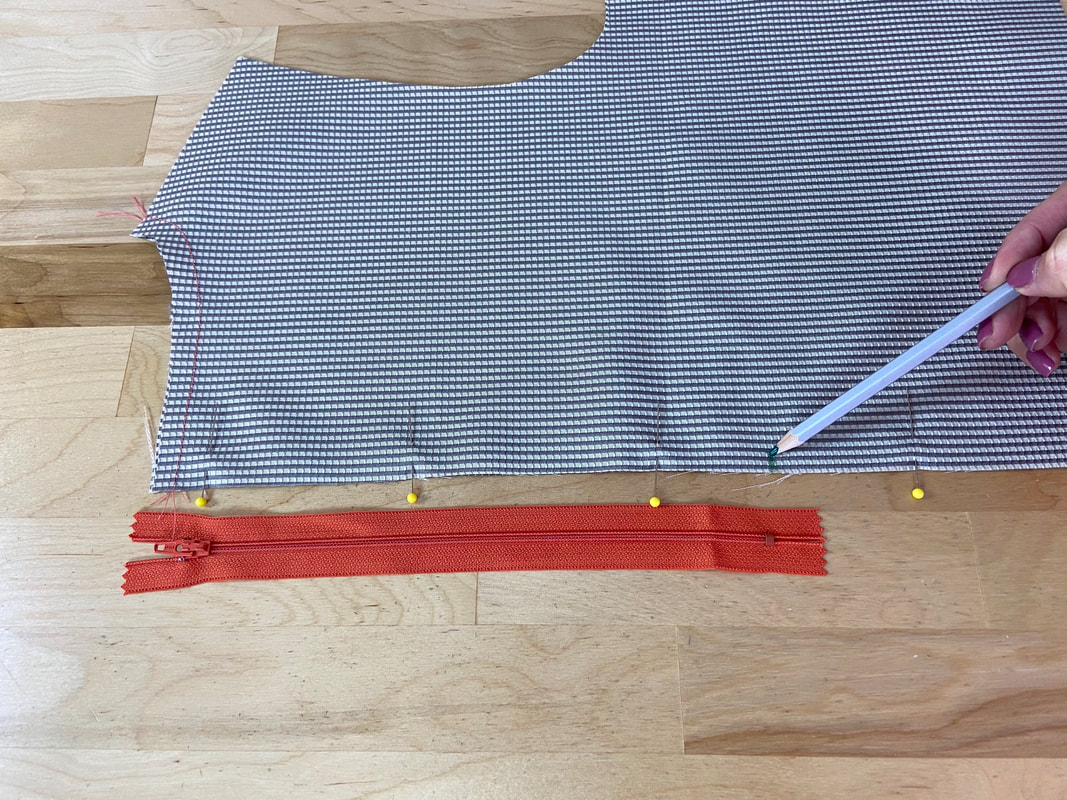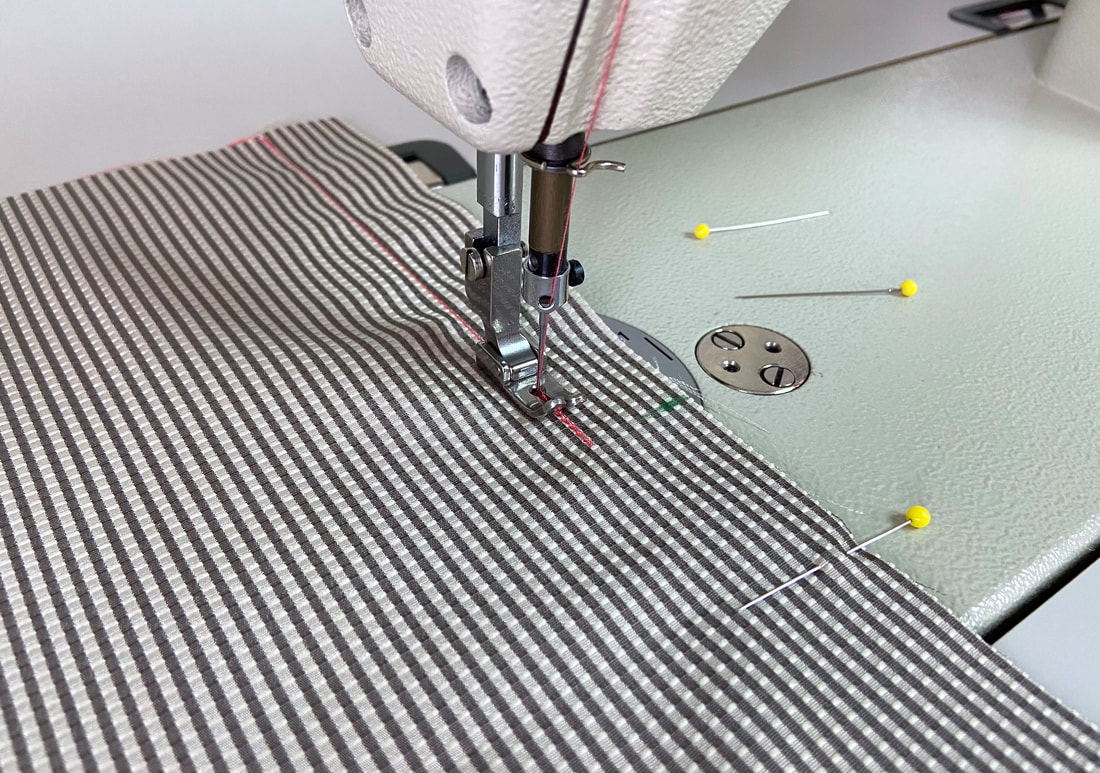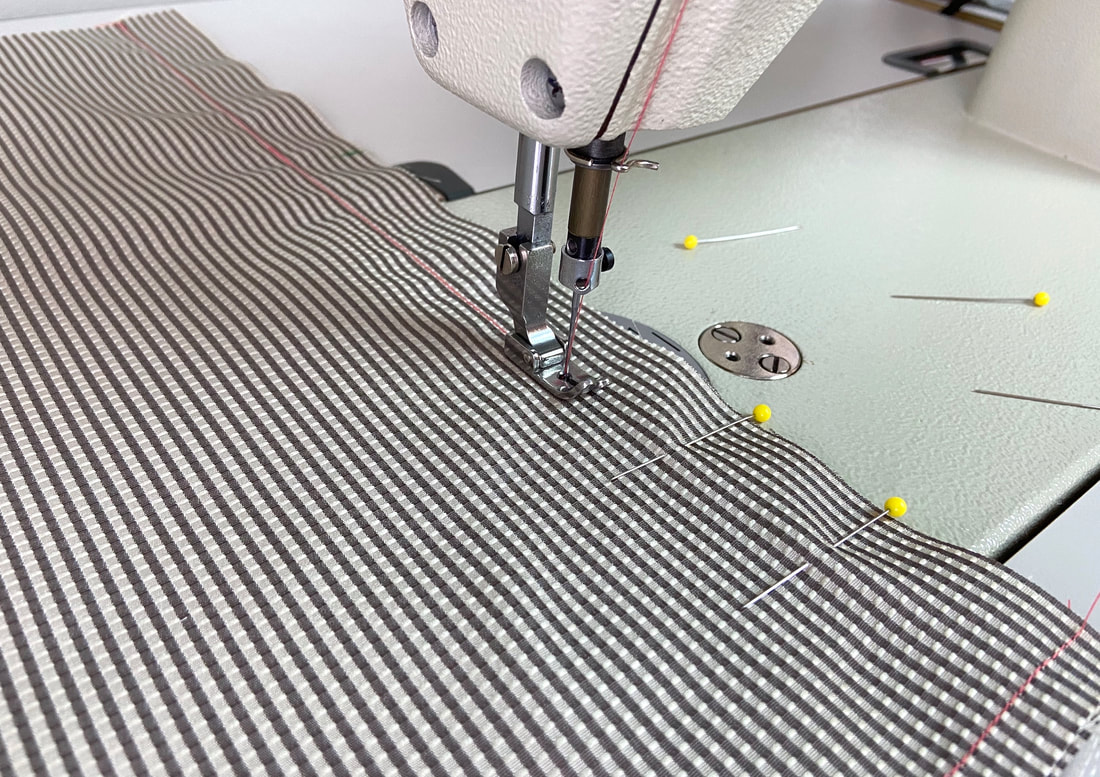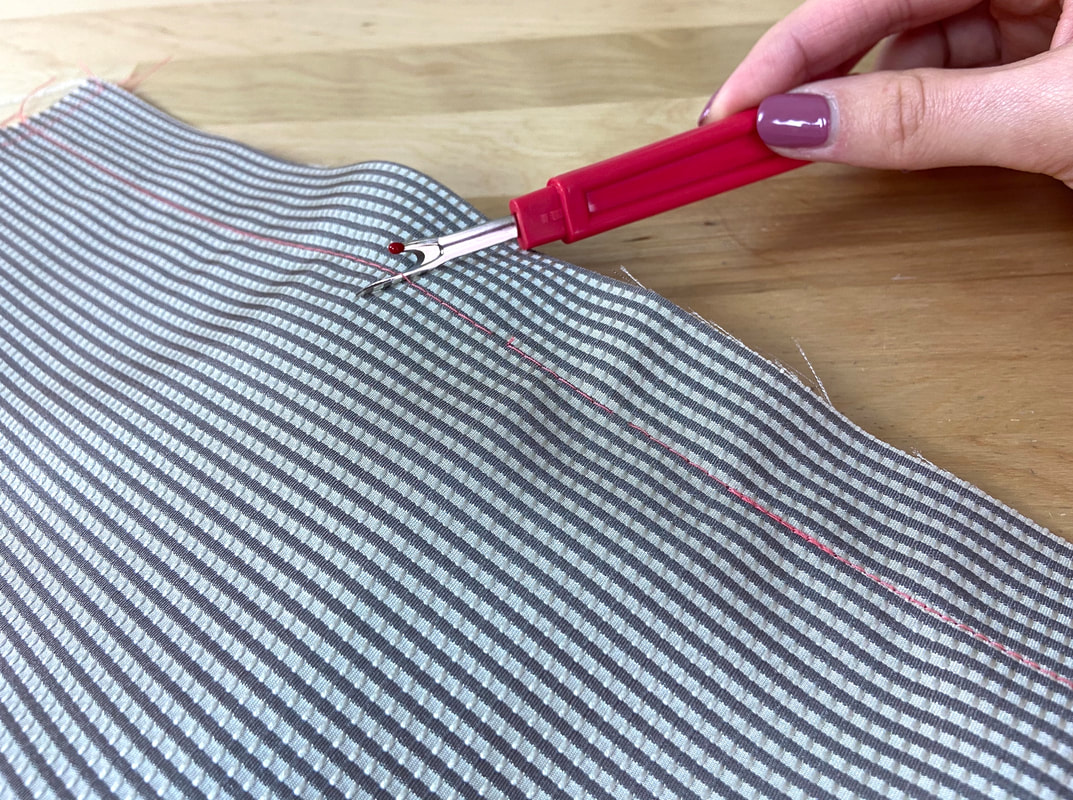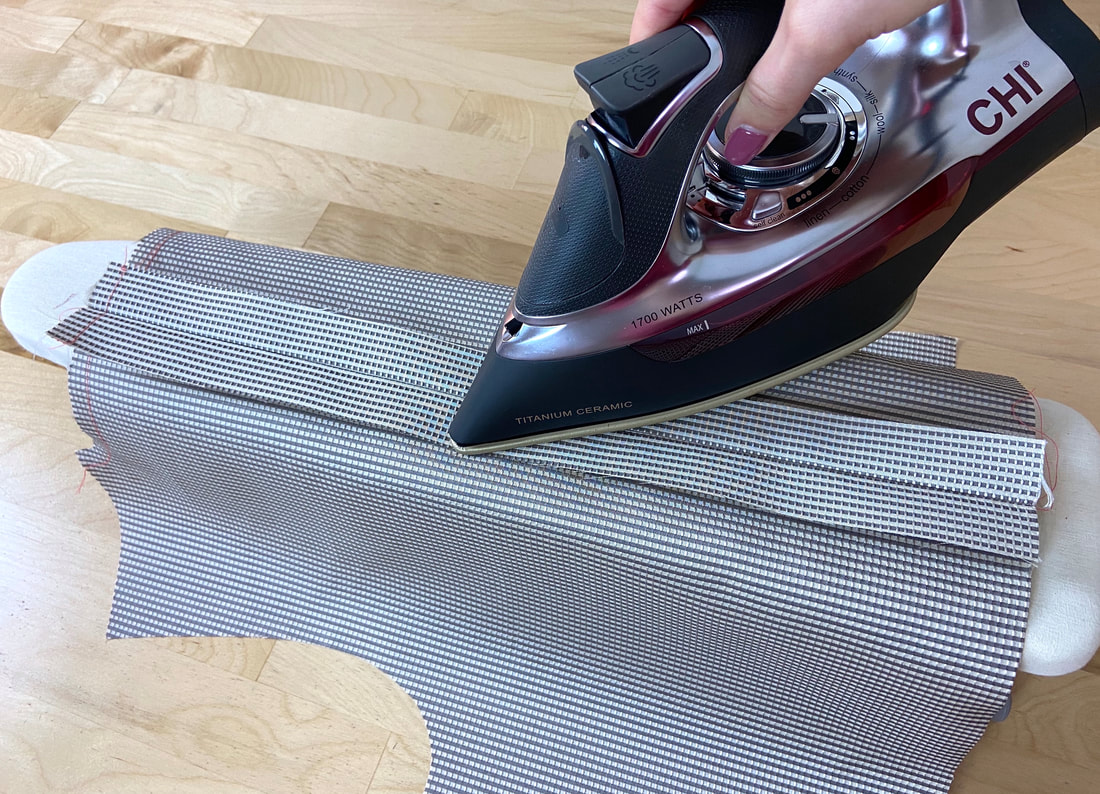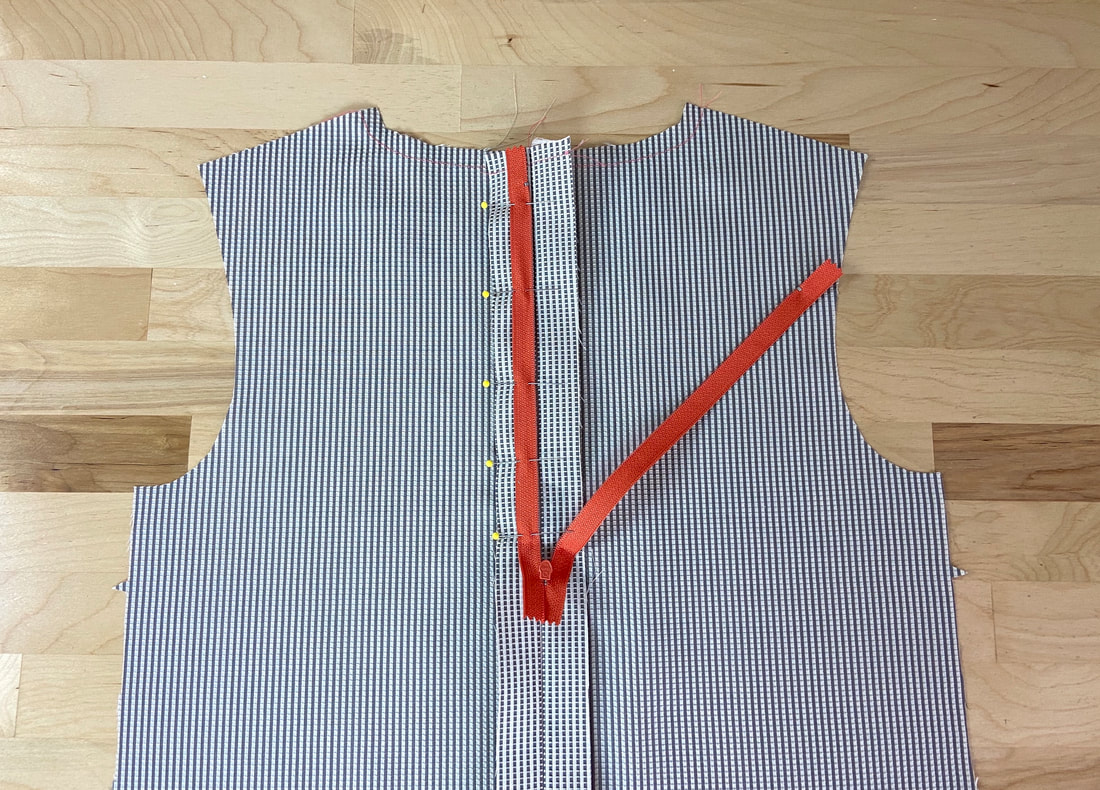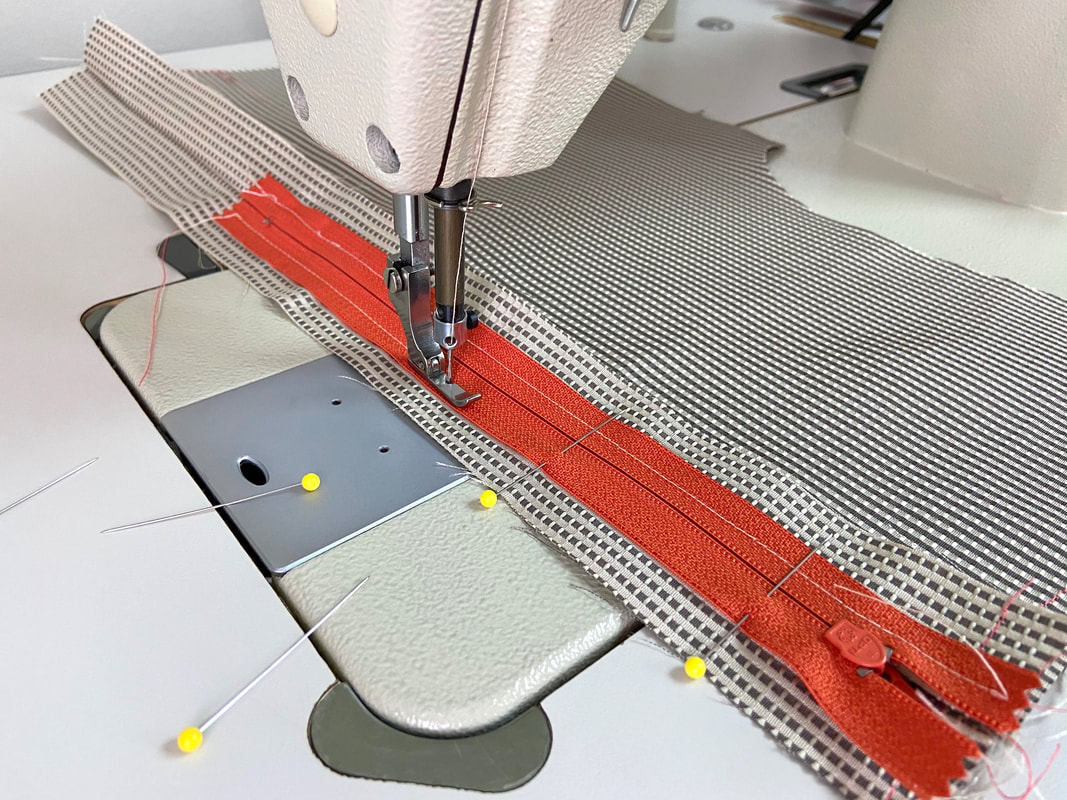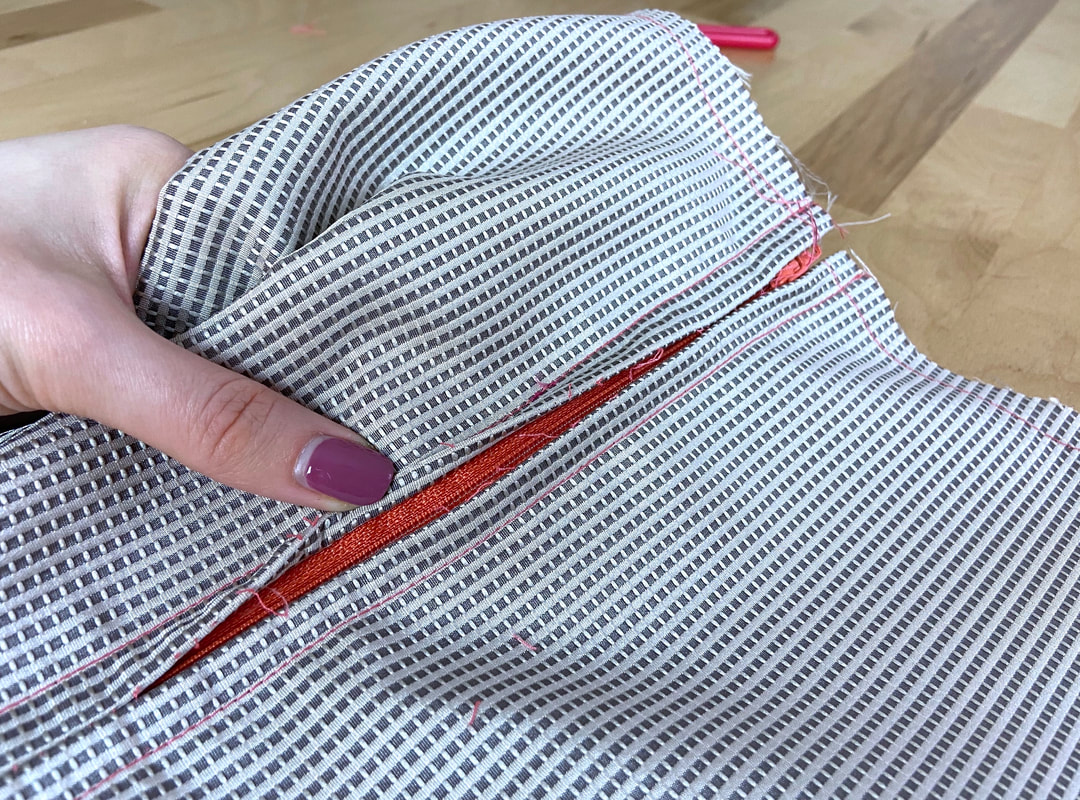How To Ensure A Perfectly Centered Zipper Application In Dressmaking
A centered zipper application entails that the zipper teeth are perfectly aligned between two equally spaced plackets. Not only should the placket edges abut perfectly at the zipper opening, the zipper teeth should be completely hidden and centered at this abutted area, blending smoothly into the rest of the seam at the bottom.
Here is a simple technique you can use to not only ensure a perfectly centered zipper, but also a much more comfortable application process:
Here is a simple technique you can use to not only ensure a perfectly centered zipper, but also a much more comfortable application process:
1. Align the seam edge (housing the zipper) with face sides touching as you would any conventional seam, and pin perpendicularly to secure the two layers together. Using the zipper, measure and mark the zipper's bottom opening directly on the seam allowance using a quilting pencil or tailor's chalk.
2. Starting from the bottom and using a regular stitch length, stitch the seam following the designated seam allowance - 1" in this case. When arriving at the marked bottom zipper location, backstitch to reinforce.
3. Switch your machine setting to a basting stitch, or the longest stitch available on your sewing machine, and continue stitching forward until you reach the top of the seam. The machine basting should cover the entire portion of the zipper closure.
4. Clip the basting (only) every 5-6 stitches using a seam ripper as pictured above.
5. Open the seam allowance layers gently, and iron them open being careful not to accidentally pull the clipped basted portion apart.
6. Open the zipper all the way and place it face down on the wrong side of the seam. Align one portion of the zipper tape to the corresponding seam allowance layer underneath such that the zipper teeth fall directly on the seamline. Aligning and pinning this initial portion while the zipper is fully open will ensure that the zipper teeth are perfectly in line with the centered zipper opening in the final application.
7. Once the first portion of the zipper is stitched and secured, the zipper is fully closed which naturally aligns the second zipper tape portion with its corresponding seam allowance layer.
8. To complete the centered zipper application, the basted seam edges are pulled apart to release the clipped stitching. This should be fairly easy to do without requiring too much force. Don't forget to pull any remaining loose threads from the seam edges.
As a result, you should have a perfectly aligned zipper that is centered underneath two topstitched plackets. The process is made extremely easy by the initial open zipper alignment and of course, the use of machine basting.
As a result, you should have a perfectly aligned zipper that is centered underneath two topstitched plackets. The process is made extremely easy by the initial open zipper alignment and of course, the use of machine basting.

